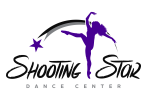What is it?
Dance Therapy, also known as Movement Therapy or Dance Movement Therapy, is “the psychotherapeutic use of movement to promote emotional, social, cognitive, and physical integration of the individual, for the purpose of improving health and well-being” (https://adta.org/2014/11/08/what-is-dancemovement-therapy/) Now, you may be asking: what on earth does any of that mean? To put it simply, Dance Therapy allows one to get in touch with themselves through dance and movement. It is not dancing for a performance or dancing to improve technique. Dance Therapy is a way for one to non-verbally express their innermost feelings in a safe and comfortable way that makes the body feel good.
What can it help?
Some examples of the emotional, social, cognitive, and physical issues Dance Therapy can help include:
- Chronic pain
- Childhood obesity
- Cancer
- Arthritis
- Hypertension
- Cardiovascular disease
- Anxiety
- Depression
- Disordered eating
- Poor self-esteem
- Post traumatic stress
- Dementia
- Communication issues
- Autism
- Aggression/violence
- Domestic violence trauma
- Social interaction
- Family conflict
(https://www.goodtherapy.org/learn-about-therapy/types/dance-movement-therapy)
Want to see an example?
Check out my favorite Dance Movement Therapy video! It shows how this modality can be used for children in a hospital setting: https://www.youtube.com/watch?v=O4KkQkv3vKk

 (https://www.google.com/search?q=ballet+mime&source=lnms&tbm=isch&sa=X&ved=0ahUKEwiJ8Nzh1oLWAhUG1CYKHY9MBMMQ_AUICygC&biw=1306&bih=655#imgrc=MIOs0mg37ocb4M:)
(https://www.google.com/search?q=ballet+mime&source=lnms&tbm=isch&sa=X&ved=0ahUKEwiJ8Nzh1oLWAhUG1CYKHY9MBMMQ_AUICygC&biw=1306&bih=655#imgrc=MIOs0mg37ocb4M:)